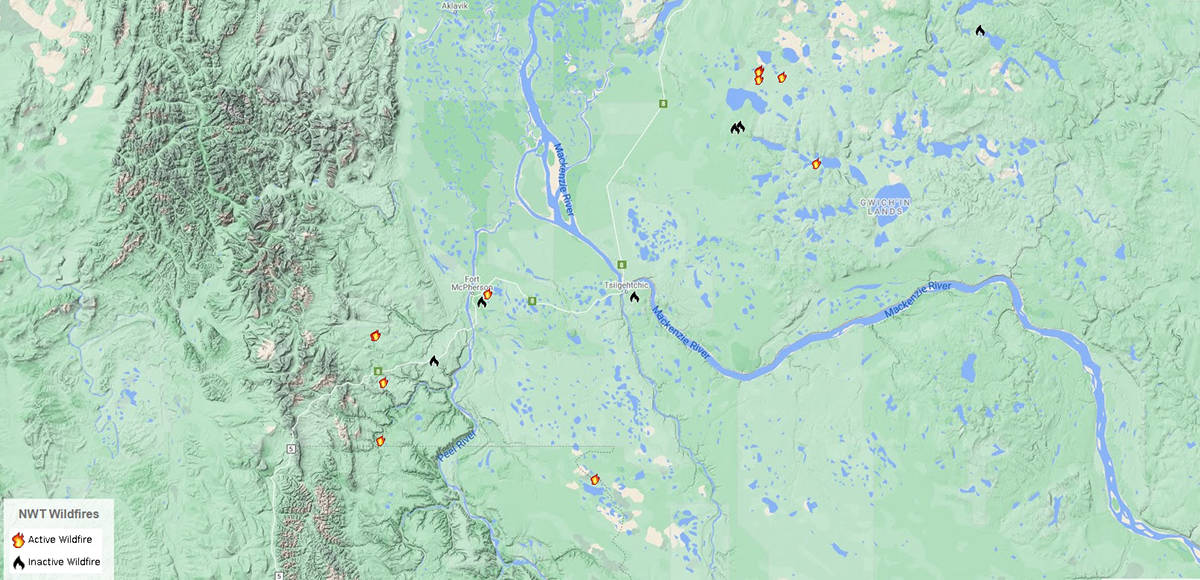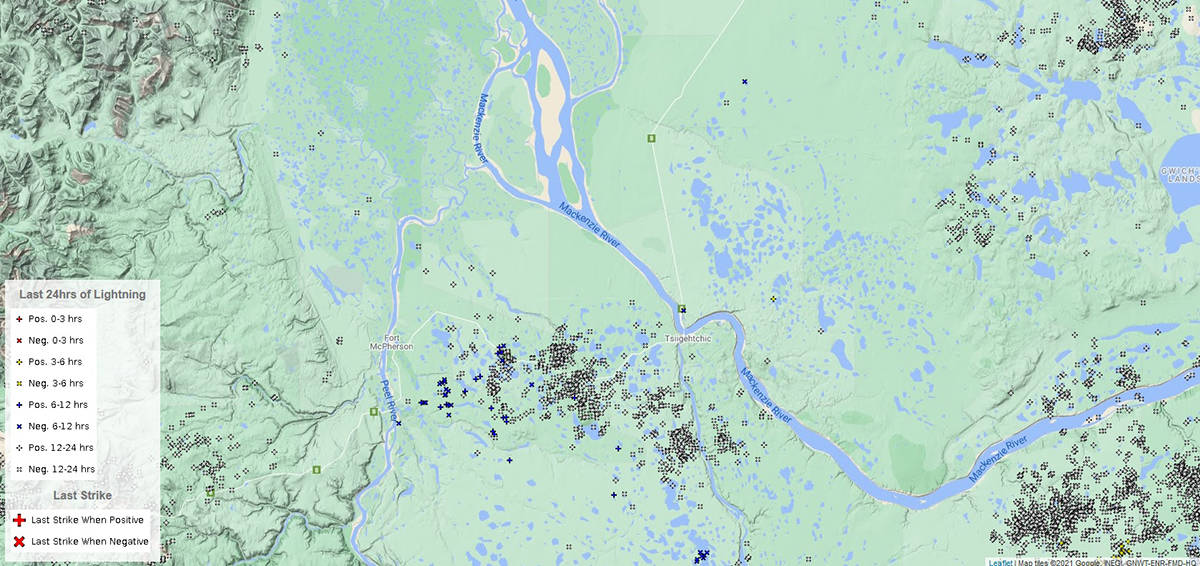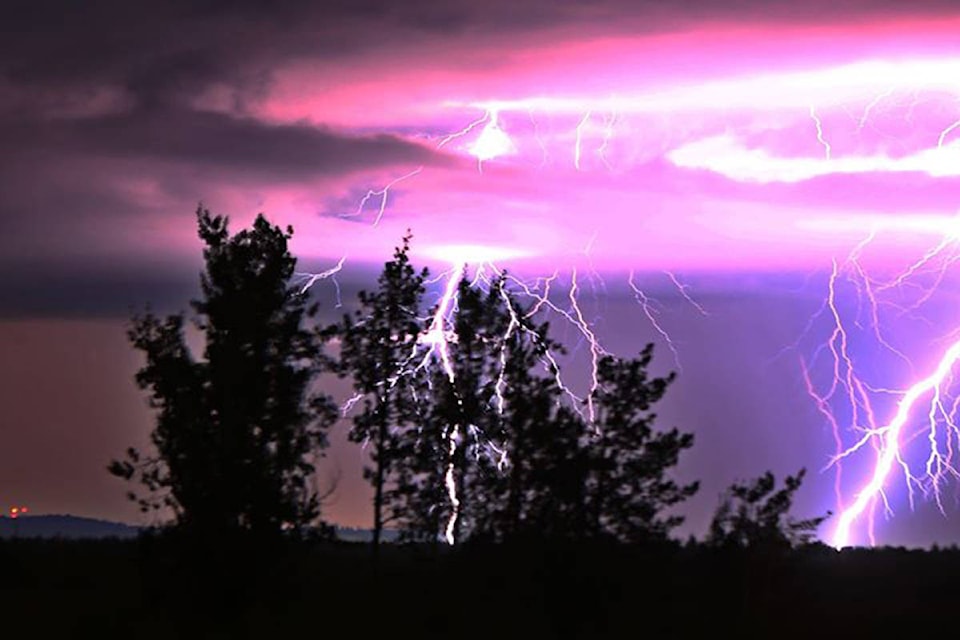Firefighters with Environment and Natural Resources are fighting nine forest fires sparked overnight by lightning in the area of Fort McPherson and Tsiigehtchic.
Four new fires are burning within 60 kilometres of Fort McPherson, four more are burning less than 100 kilometres east of Inuvik and the Dempster Highway and one fire is burning just over 70 kilometres east of Tsiigehtchic.
Crews are conducting an initial attack on the four fires near Fort McPherson after smoke reports alerted authorities to the fires. One crew and helicopter is on site with two air tanker groups, and ENR reports crews and addition aircraft are en route from both Inuvik and Tsiigehtchic to help out.
"Currently two crews are actioning two fires in the Midway Lake area," said ENR spokesperson Jaimee Kepa. "Heavy tanker action was taken last night on priority fires.
"A tanker from Inuvik and Norman Wells was in the area over Midway Lake and Sunny Lake. One crew is currently actioning fires in the Western Region. We currently have more resources coming to Inuvik today: four crews, two fire techs, and one ignition specialist arriving today in the evening."

All the new fires were started by lightning strikes overnight as temperatures dropped from 31 C Wednesday evening to 12 C by 9 a.m. Thursday morning.
The sudden drop in temperature has minimized the risk to the public from the fires, noted Kepa.
"As of right now, given the weather, we are experiencing way less fire activity," said Kepa. "This down turn in weather will aid in getting some of these fires under control. None of these fires pose a danger to the public but may pose threat to values at risk."
Lightning is becoming more frequent in the Arctic as climate change progresses. A March 22 study published in Geophysical Research Letters found that the frequency of lightning in the Arctic circle has tripled in the last decade. The study noted that average temperatures in the Arctic increased from 0.65 C to 0.95 C higher than pre-industrial temperatures, creating more frequent conditions for lightning storms. The researchers measured 18,000 lightning strikes in 2010 and over 150,000 in 2020.
Lightning is also being observed over sea ice, being seen nearly at the North Pole. The study also notes with Arctic sea ice receding at a rate of 13 per cent per decade, cruise-liners and other large ships could become potential lightning rods during the summer months.
“(Historically,) the number of lightning strikes in the high Arctic is very low,” said Environment and Climate Change Canada meteorologist Terri Lang. “To see a higher number of lightning strikes is alarming. Of course, you can’t tie one event to climate change, but increases in thunderstorm activity and lightning moving further and further north is consistent with the science of climate change. That’s what’s predicted.
“One of the things you need to form thunderstorms is heat.”

She noted the majority of lightning strikes recorded by the government were far to the south of Fort McPherson, but added the agency doesn’t maintain a large stock of lightning detectors in the Beaufort Delta because lightning has historically been quite rare.
“Because of where our sensors are placed, the detection drops off quite a but the further north you go,” she said. “We might need to expand the network because of what’s happening, because we’re seeing more and more lightning across the north.”
In total, there are 11 active fires in the Beaufort Delta, one sitting on the Yukon border south of Tsiigehtchic, also caused by lightning, and the other at the landfill in Fort McPherson. This last fire was human-caused and is under initial attack.
Fort McPherson, Tsiigehtchic and Inuvik are listed as extreme fire hazards and will remain that way for the next few days. There have been 20 fires in total this year in the Beaufort Delta, covering a total area of 2,845 hectares.
